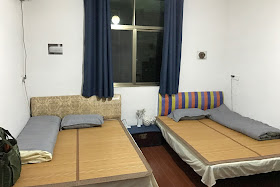I took on an unusual trip to the town of Jingdezhen (景德鎮) late last month, as part of the “study tour” in ceramics making. Well I have been taking pottery classes for a few months already, and the studio I learned from organizes such tour regularly. And the timing was just perfect this time when the tour schedule fell right during the two weeks I was on leave in between work assignments, so I jumped on the chance to travel to an unfamiliar place to do something different.
Jingdezhen, in Jiangxi (江西) province in the middle eastern part of China, has long been known as the ceramics capital. The mountains nearby yielded some of the best clay which produces the perfectly white porcelain and attracted the best workers in the trade to settle in this small town. For centuries and generation after generation, they became the china supplier to the royal courts, and later, throughout the world. It shows how significant china trade is when the word also became the anglicized name of the country.
While one might think "study tour" as boring and disciplined, ours was actually exciting and fun – more play than study and work, to be honest. During our week in Jingdezhen, we took residence at a ceramics workshop called Yisen (一森), in a traditional village not far away from the campus of the local Ceramics University. The accommodation was very pleasant and relatively well-equipped; right outside was the view of the field and farmland, with mountains and rivers a bit further away. Downstairs was the studio area with all sorts of equipment and materials and accessible all day long, or even late at night if you are keen on burning some midnight oil making ceramics stuff.
In the studio we happened to meet other visitors and students coming for a short-term stay, or from the nearby university wanting a space to work on their school project, or just hang out. And during the week we took on a class on Raku, the style of ceramics-making rooted in Japan but now made popular worldwide, using a low-temperature and short firing technique, with lead-based glazes which led to a dark, sometimes metallic color on the surface, and crackling pattern on the glaze, the result of rapid temperature shock during the process.
We spent a couple afternoons and evenings making our pieces in the studio, put on the special glazes, then on last day watched as they were put into the kiln, fired up to 1200C+ for a couple of hours, then finished with post-fire reduction in a closed canister - in a spectacular scene almost like a bonfire. (all the whilst doing barbecue on the side) And to complete the experience, we each managed to bring home our work – of course, that's in addition to many other pieces that we bought along the way...














No comments :
Post a Comment